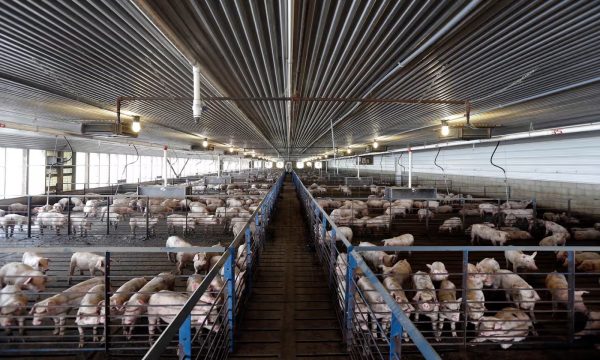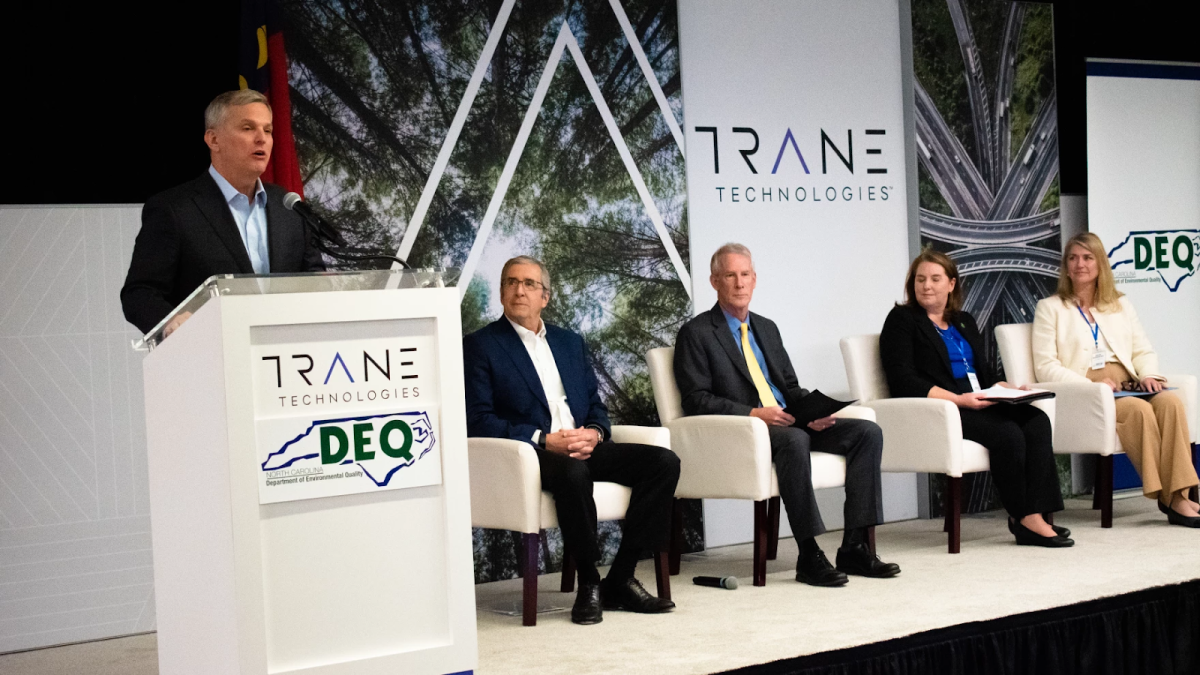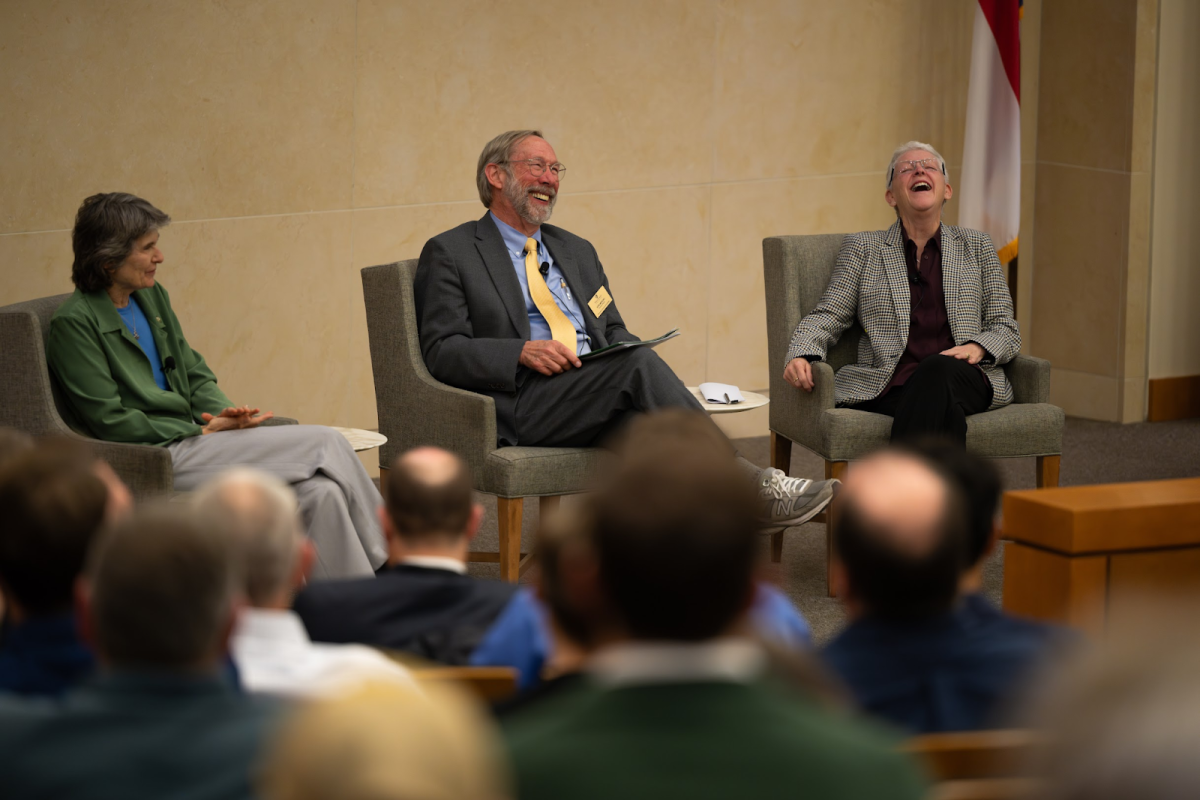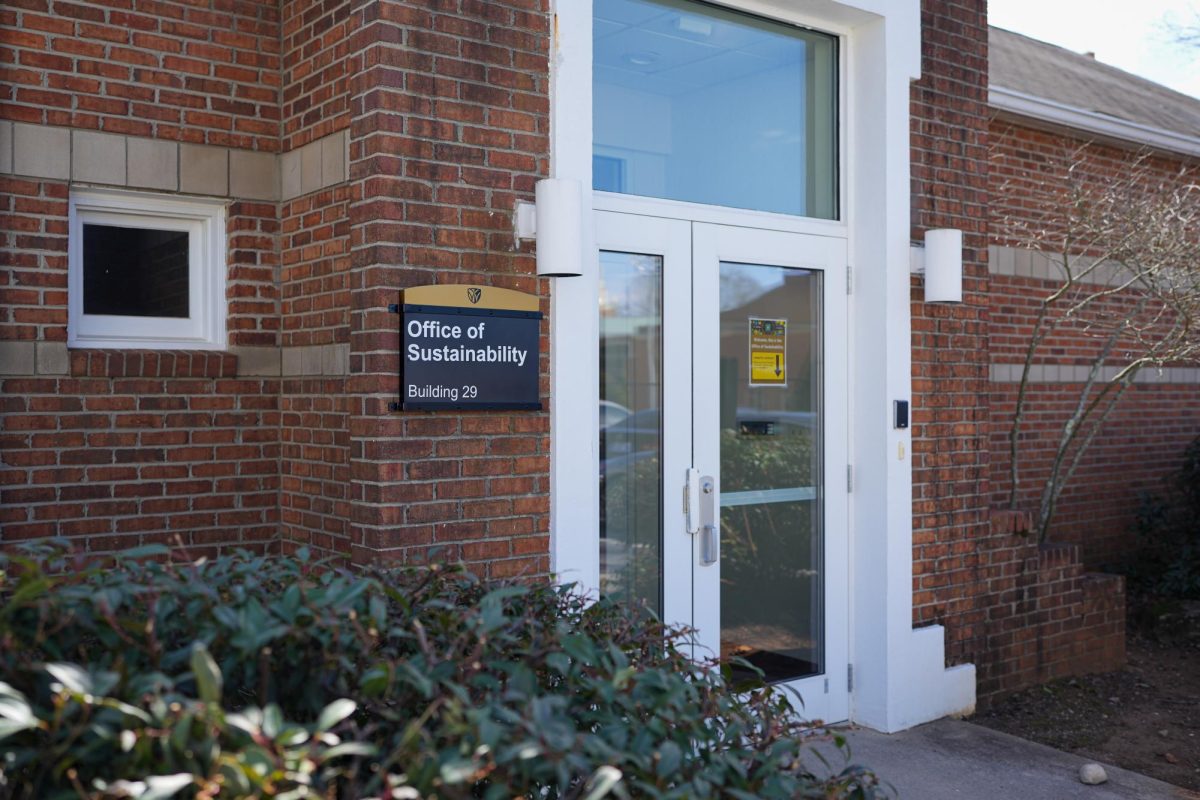Bestselling author Corban Addison and professor of hydrology at Duke University, Ryan Emanuel, presented at a book forum hosted by the Mellon Environmental and Epistemic Justice Initiative (EEJI) at Wake Forest University on Wednesday, Oct. 23.
“The purpose of the EEJI is to bring more awareness to environmental justice stories and issues, so it was important to have two distinguished people who have written books on environmental justice in North Carolina,” Melba Newsome, EEJI project coordinator and Wake Forest professor of journalism, said.
Emanuel, author of “On the Swamp: Fighting for Indigenous Environmental Justice” and member of the Lumbee tribe, the largest Native American tribe in the Eastern United States, said he wrote to share stories of survival and resilience in the face of radical environmental injustice.
“It’s a book I wrote to show readers how to use an Indigenous rights framework to understand and address the deep connections between present-day environmental issues and the long history of settler colonialism that underpins these issues,” Emanuel said.
Emanuel didn’t set out to write a book, explaining that he started as a water scientist.
“I went into hydrology because I was drawn to the outdoors, specifically rivers, and I’ve always liked math and computer modeling,” Emanuel said.
Over time, Emanuel noticed a lack of Indigenous representation in the environmental science field.
“From an early age, my family taught me that the purpose of education is to serve your people but because I didn’t meet any Native American scientists until I was a professor,” Emanuel said. “I didn’t have guidance on how to do this.”
This sentiment encouraged Emanuel to write “On the Swamp” to help outsiders understand what cultural and historic preservation means to the Lumbee people and encourage other members of the Indigenous community to think about how they can reconnect with their culturally important waters.
Addison, author of “Wasteland: The True Story of Farm Country on Trial,” centered his story around a group of North Carolinians who stood up to a meatpacking company polluting their community.
“Has anybody ever driven I-40 East to Wilmington?” Addison asked attendees. A few hands in the crowd went up. “As you’re driving down the tree tunnel, have you stopped at one of the little towns like Wallace or Kenanville?” Addison questioned. Fewer hands were raised.
He continued: “If you have, you’ll inevitably come across dozens of these large-scale industrial hog operations. In Duplin County, there are areas with hog operations in every direction you look. Most North Carolinians have no idea about this, and it’s remarkable to me.”

Addison explained that the hog farm industry hides the living conditions of hogs from the public.
“There is no dirt inside a hog operation; they stand on concrete,” Addison said. “They never see the sunlight. They stay in these little cages for about five months, growing to their slaughter weight of 250-300 pounds on a special diet from the industry.”
Waste from a hog is five times the waste of the average human being. Addison put this into perspective by explaining that a single-farm hog operation typically holds about 1200 hogs– equivalent to the waste of a town of 6,000 people. Assuming a small-scale operation holds about three barns, this is the equivalent of the waste of a city of 20,000 people.
What happens to this waste? It’s stored in a large, open-air pit called a lagoon. But it doesn’t end there.
“The industry came up with a simple, cheap solution for once lagoons reached waste capacity. They invented the giant sprinkler and decided to shoot this waste onto the ground with fire hoses,” Addison explained.
Initially, this idea seemed feasible because the waste was used as fertilizer. Now, it’s just dangerous. Giant holes in the ground with hog waste contain hydrogen sulfide — a gas that has detrimental effects on humans upon exposure.
“There’s ammonia, pathogens — the things that make people and animals sick yet it’s sitting there open to the air and then it gets sprayed out, in many cases into neighborhoods that have occupied these spaces for generations,” Addison said.
Not all North Carolina residents are equally exposed to hog waste and the pathogens that come with it. According to Addison, Black residents have a 54% higher chance of living within three miles of a hog operation than white residents.
He told the story of one particular Black resident of Duplin County, Elsie Herring, who sat on her front porch with her mother and brother when a hog farmer parked his tractor on their property line and began spraying hog waste on their home.
Herring got on the phone, thinking she could make a change. With each attempt at calling anyone with the authority to help her case, she found out they were all connected to the hog farmers in ways she simply wasn’t.
Only after a group of hog farmers planned to put up a giant hog factory with a lagoon right up the road from the golf resort, Pinehurst, did the state legislature begin to listen to Herring’s requests.
Each story told by Emanuel and Addison echoed similar sentiments of highlighting marginalized voices in environmental justice discourse.
Newsome believes that events like this book forum are just the beginning of what’s to come from the EEJI.
“Faculty are incorporating more environmental justice topics into their curriculum, and we plan to continue our summer institute which invites journalists of color to report on these issues of displacement, gentrification and so much more,” Newsome said.











